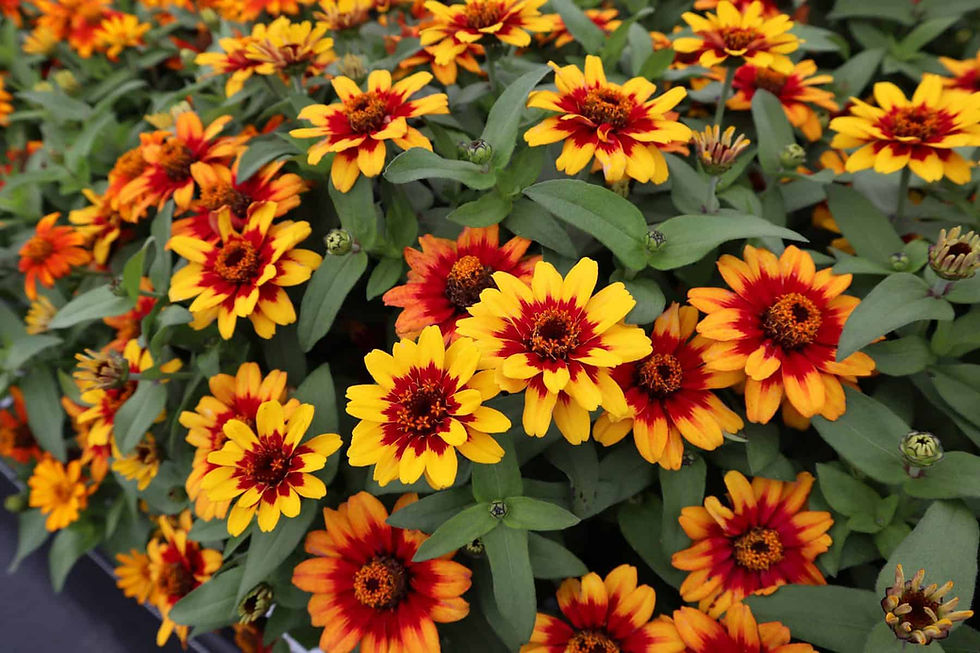Disease resistant zinnias for the garden
- Brooke Richter

- Jun 19, 2022
- 2 min read

Bi-color Yellow Red Profusion Zinnia is good for landscapes or containers. Photo courtesy All-America Selections.
If it’s been a while since you’ve grown zinnias in your Indiana garden, you may be in for a surprise. Plant breeders have developed zinnias that are resistance to powdery mildew, an unattractive, leaf-deforming fungus disease.
As do a lot of plants, some zinnias come as a series, such as Profusion, Magellan, Zahara and Queeny. One of the best new zinnias is Profusion Red Yellow Bicolor. This summer annual starts with bright yellow flowers and red center aging to soft peach petals that change to warm pink, all on the same plant.
An All-America Selections 2021 Gold Medal Winner, Profusion Red Yellow Bicolor has a nice rounded, slightly sprawling habit, making it a good selection for containers or the landscape. It received the Fleuroselect Gold Medal based on European performance.
Zinnias for cutting
Although the Profusion series’ flowers can be cut for indoor arrangements, these are not the taller zinnias grown for that pleasure.
Enter Queeny, a zinnia series bred to be an outstanding cut flower. Several in this series also are All-American Selections winners. What that means is the plants were grown throughout North American and they were judged to be winners because of improved characteristics. That could be the size and color of the flower, uniformity, length in indoor arrangements, disease resistance or other attributes.

Queeny Lime Orange zinnias is great for cutting. Photo courtesy All-America Selections.
Queeny Lime Orange, 2018 AAS Flower Winner, recipient of the Fleuroselect Gold Medal based on European performance.
Queeny Lemon Peach, 2022 AAS Flower Winner, recipient of the Fleuroselect Gold Medal based on European performance.

Queeny Lemon Peach zinnia is great for indoor arrangements. Photo courtesy All-America Selections
Fortunately, these and all other zinnias are available as seeds, and zinnia seeds are easy to sow and grow. You can start seeds indoors or sow them directly in the garden. The seed packages give you the timing of the process and other instructions.
Tips for controlling powdery mildew on zinnias
Don’t crowd plants. Make sure they have good air circulation.
Monitor plants, looking for white or gray spots on the upper surfaces of leaves. Hot and humid weather encourages fungus disease.
Remove affected leaves as soon as you see them. To dispose of the leaves, put them in a bag to prevent spreading spreading the disease to other zinnias.
Water the base of plants at soil level rather than overhead irrigation.
Use of a fungicide on zinnias is not usually necessary.
Powdery mildew is plant specific and will no spread from zinnias to other plants.
Concerns about other plants in the landscape?
If your landscape plants are not looking great, maybe because of insects, disease, poor irrigation, or other factors, contact a Holeman professional.



Comments